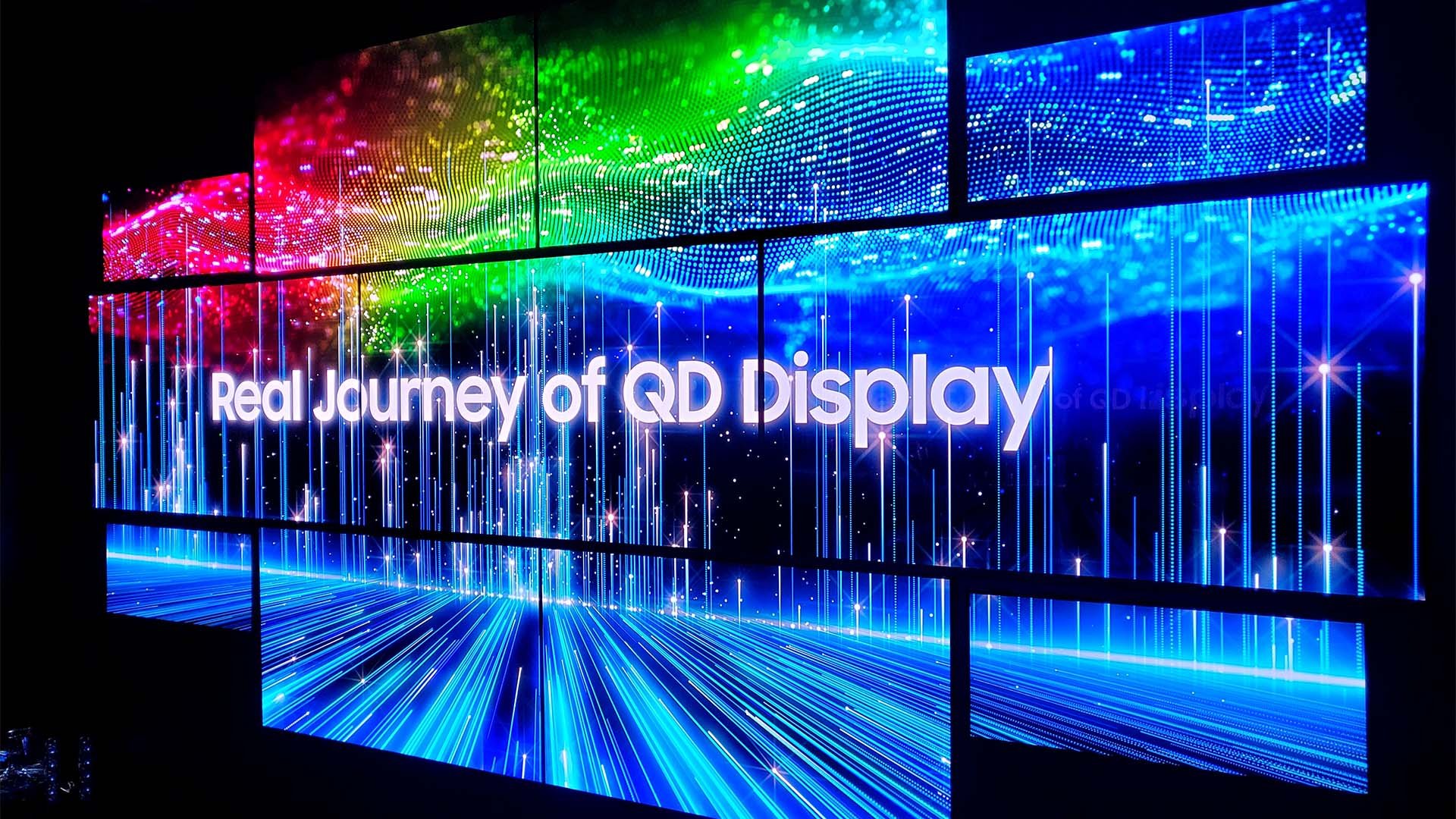A few months ago, Samsung unveiled its first QD-OLED TV, the S95B. Since then, experts and enthusiasts have been praising the TV’s performance. So, what’s so special about QD-OLED? Is it a massive improvement over Samsung’s QLED TVs or other OLED TVs? Let’s find out the difference between QD-OLED and QLED TVs.
QLED TVs vs. QD-OLED TVs: How Do They Work?
Despite QD-OLED and QLED displays featuring quantum dots (also called nanocrystals), they work very differently. QLED TVs use the same LCD panels that we’ve seen for years. Traditional LCDs use a blue backlight and a yellow phosphorous layer to create white light, which is then passed through a color filter to create red, green, and blue lights. However, the white backlight is not very white, so the color reproduction is not extremely accurate.
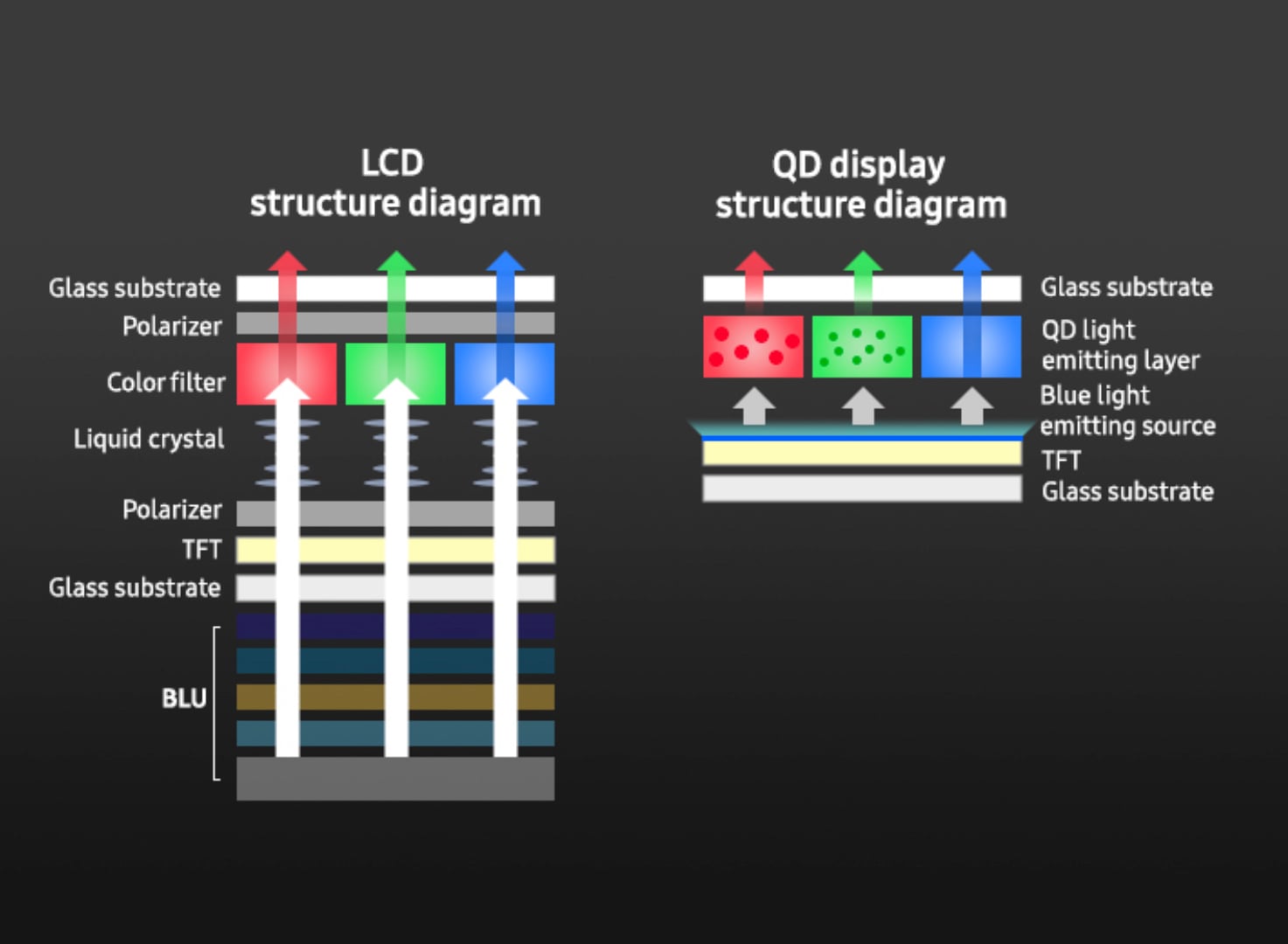
QLED displays use a blue LED light source and a thin sheet of red and green quantum dots (with their size measured in nanometers) to recreate a purer white backlight. That light is passed through a color filter to recreate red, green, and blue. This results in whiter whites and higher color volume while maintaining high brightness levels. This is why Samsung claims that its QLED TVs can reproduce 100% color volume.
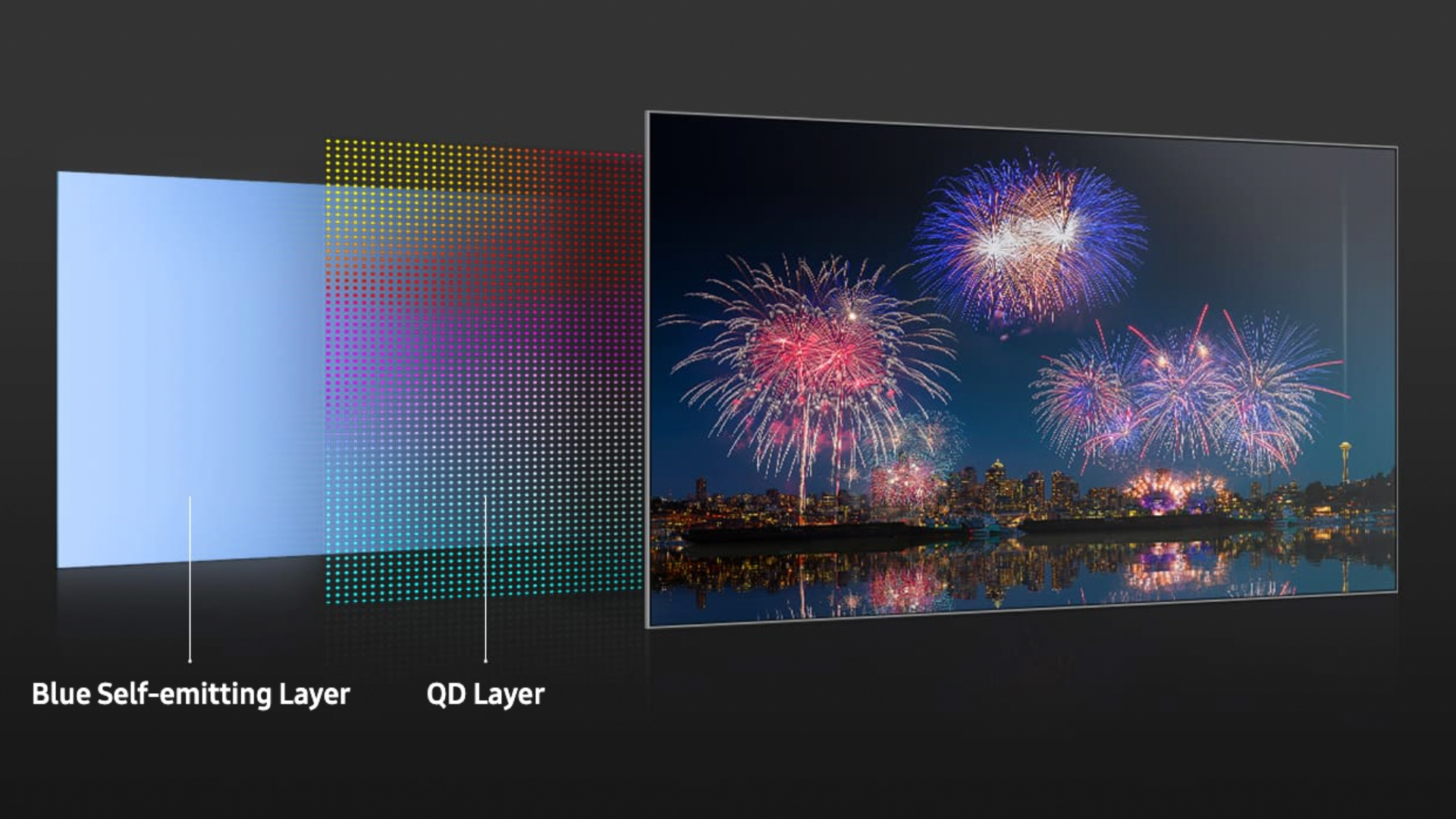
QD-OLED displays use organic material for semiconductors, similar to traditional OLED TVs. LG’s OLED solution uses white OLED and passes that light through a color filter to create red, green, blue, and white. In comparison, Samsung’s QD-OLED tech uses a blue OLED layer as a backlight, and that is passed through quantum dots to create red, green, and blue colors.
Quantum dots are incredibly tiny. The smallest of quantum dots, such as 2nm, emit blue light, while those measuring 3nm and 7nm can emit green and red light, respectively. They absorb energy from any light source and create pure monochromatic light. Hence, QD-OLEDs can produce pure red, green, and blue colors, producing more accurate colors than typical OLEDs in LG TVs. They can also create higher brightness because there’s no color filter where light loss can happen.
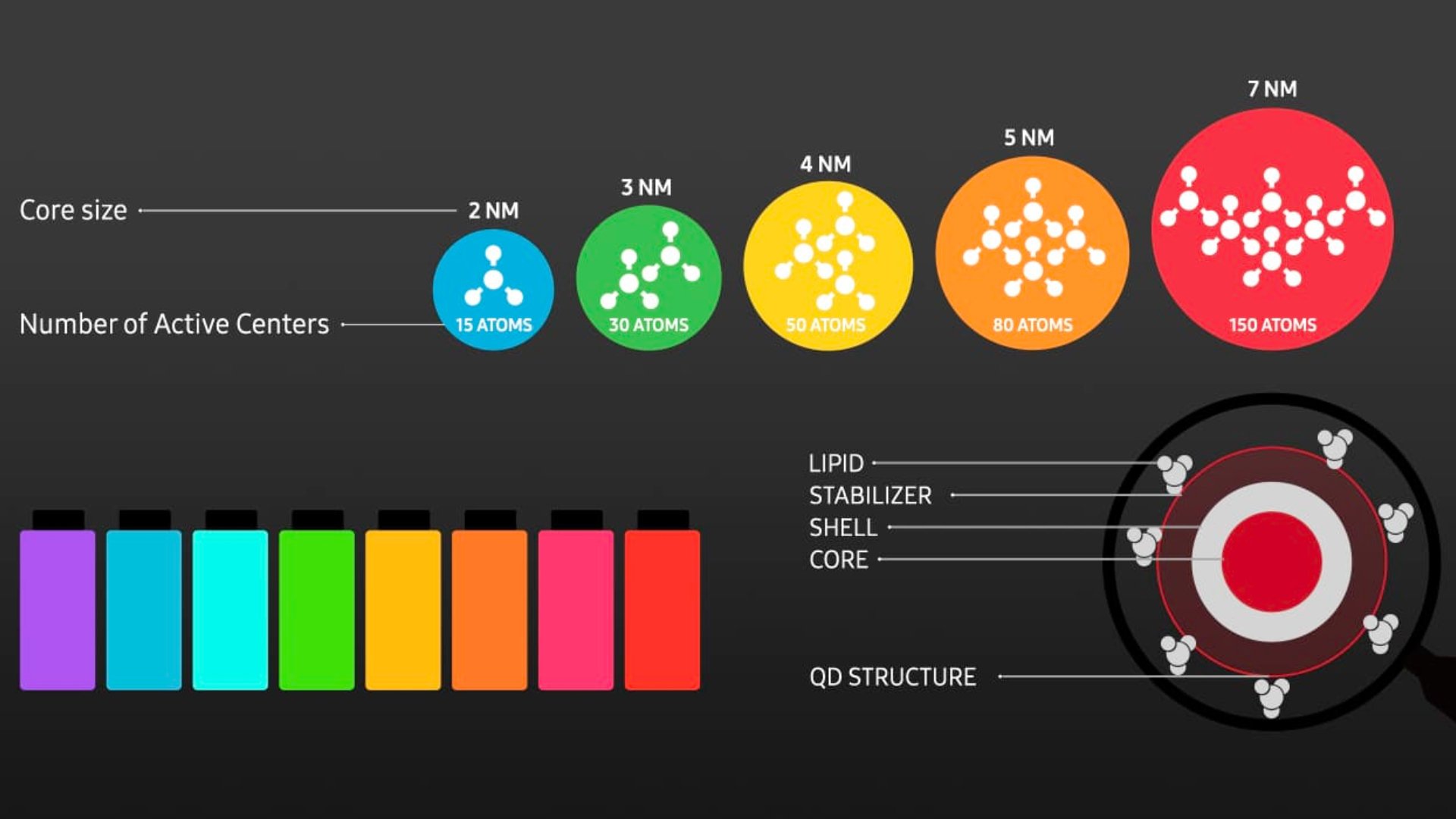
How Are QD-OLEDs Better Than QLEDs?
- Since individual QD-OLED pixels can create their own light, they can produce perfect blacks. That also means they offer an extremely high contrast ratio and wider viewing angles compared to QLEDs.
- QD-OLED TVs don’t suffer from the halo effect seen on LED, QLED, and even Mini-LED TVs. So, in dark scenes, QD-OLED TVs perform much better than QLED TVs.
- QD-OLEDs don’t need a separate backlight, so they are thinner than QLED TVs that use a backlight layer.
- Since OLED tech is at the heart of QD-OLED, they exhibit the same sub-1ms response time compared to QLED’s sub-10ms response times. So, QD-OLED TVs are better for fast-paced games and sports.

QLED TVs Still Have Some Advantages Over QD-OLED TVs
Since QD-OLED TVs use organic material to produce light, they have the same disadvantages as traditional OLEDs. They can’t go as bright as LCD or QLED TVs.
- QLED TVs are much brighter than QD-OLED TVs, and they can sustain that brightness for a long time, offering excellent HDR performance.
- QLED TVs don’t suffer from pixel burnout seen in OLED and QD-OLED TVs. Although Samsung’s QD-OLED tech is better than LG’s OLED in this aspect, ghosting and image burn-in can still happen due to the nature of organic material used in this technology. This is great for those who watch the same channel for a long time or use their TV as their computer monitor.
- QD-OLED is a new technology, and it will take some time for Samsung Display to improve yield rates. Until then, QD-OLED TVs will be costlier than typical QLED TVs.
QLED and QD-OLED technologies have their own set of advantages and disadvantages, but when it comes to pure picture quality, QD-OLED has the upper hand.
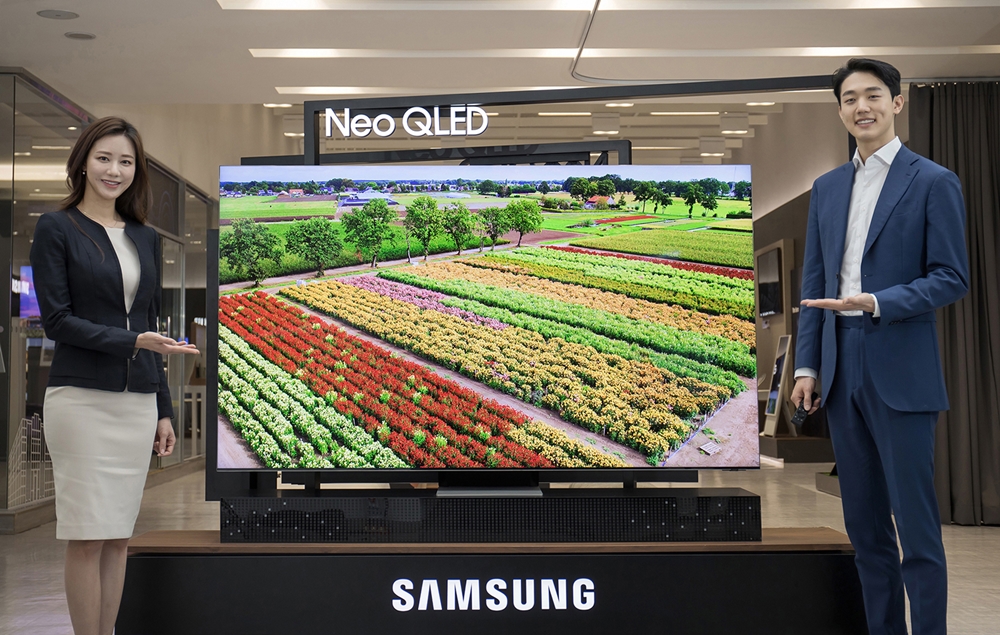
When it comes to pricing, QD-OLEDs have a long way to go before they can match QLED TVs. The 55-inch version of the Samsung S95B QD-OLED TV is priced at $2,0000. In comparison, Samsung Q80A, a QLED TV with full-array local dimming, costs just $1,100. In fact, for the same price of $1,100, you can even get the Samsung QN85A Neo QLED (Mini-LED) TV with full-array local dimming, peak brightness of 1,200 nits, and sustained brightness of up to 650 nits.
If money is no bar, you should opt for QD-OLED TVs for the best possible picture quality for everyday content. If not, you should go with QLED or Neo QLED TVs that offer an excellent price-to-performance ratio.
